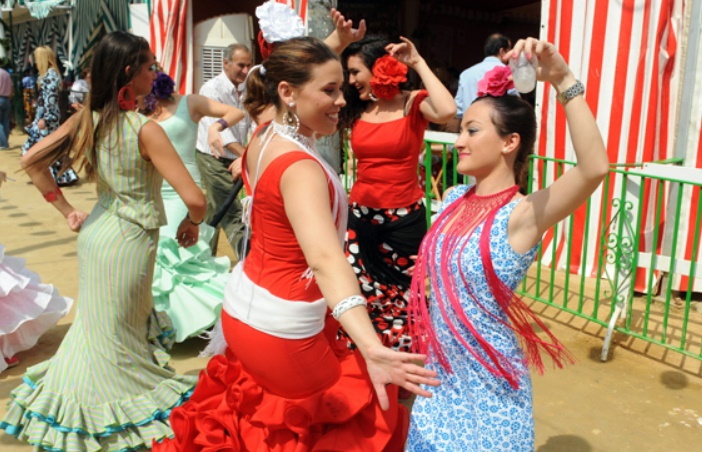Sevillanas dance is a colorful and exciting style of song and dance that originated in Castile, not Seville, as a variation of the Seguidilla.
While it is not Flamenco itself, Sevillanas are now often performed by Flamenco artists who infuse it with a distinctive flamenco touch.
The dance follows a strict 3/4 rhythm and is typically performed in pairs or groups, with choreographed routines deviating from the improvisational nature of true Flamenco.
Table of Contents
Where Is The Sevillanas Performed?
Sevillanas are a prominent feature at various festivals throughout Spain, particularly during the feria, where women wear the Traje Gitanas.
These vibrant polka-dot dresses add a touch of swirling grace to the dance.
The dance can be erotic and sensual, yet physical contact between the partners is limited until the final moments when the man places his arm around the woman’s waist to conclude the performance.
Sevillanas Dance History
Originally a courting dance, the Sevillana allowed couples a rare opportunity for affectionate display during the feria.
In the past, young couples were subject to strict courting practices, with limited opportunities for private interaction.
Thus, the Sevillana became a significant occasion for them to express their connection, albeit under the watchful eyes of the girl’s family.
Today, this traditional Spanish dance is performed at weddings, family parties, and the feria. It is a dance rooted in the everyday lives of Andalusians, often learning through constant exposure.
The genuine enjoyment and participation of ordinary people make their performances far more entertaining to watch than even professional dancers!
Check more: What Is Troika Dance?
Sevillanas Dance Steps and Styles
The dance encompasses several styles, including Sevillanas Boleras, Corraleras, Biblicas, Rocieras, and Marineras, each with distinct characteristics.
The sevillanas follow carefully choreographed steps, with at least nine different steps in each section and four sections in the overall dance:
- Standard Sevillana Step: Start with the basic Sevillana step.
- Passing Step: Move past your partner with a standard passing step.
- Corners: Perform corner steps, moving diagonally.
- Turn to the Left: Make a single turn to the left.
- Close: Bring your feet together.
- Brush Steps: Glide your feet smoothly; imagine as if you’re ice-skating.
- Crossing Steps: Execute crossing steps, similar to pas de basque.
- Turn to the left and point your right foot toward your partner.
- Turn to the right and point your left foot toward your partner.
- Zapateado: a series of complex footwork (usually in the third Sevillana).
- Move past your partner and mark time.
- Turn to the left while raising your right foot.
- Turn to the right while raising your left foot.
Careos: A specific type of passing step at the end of the fourth Sevillana
